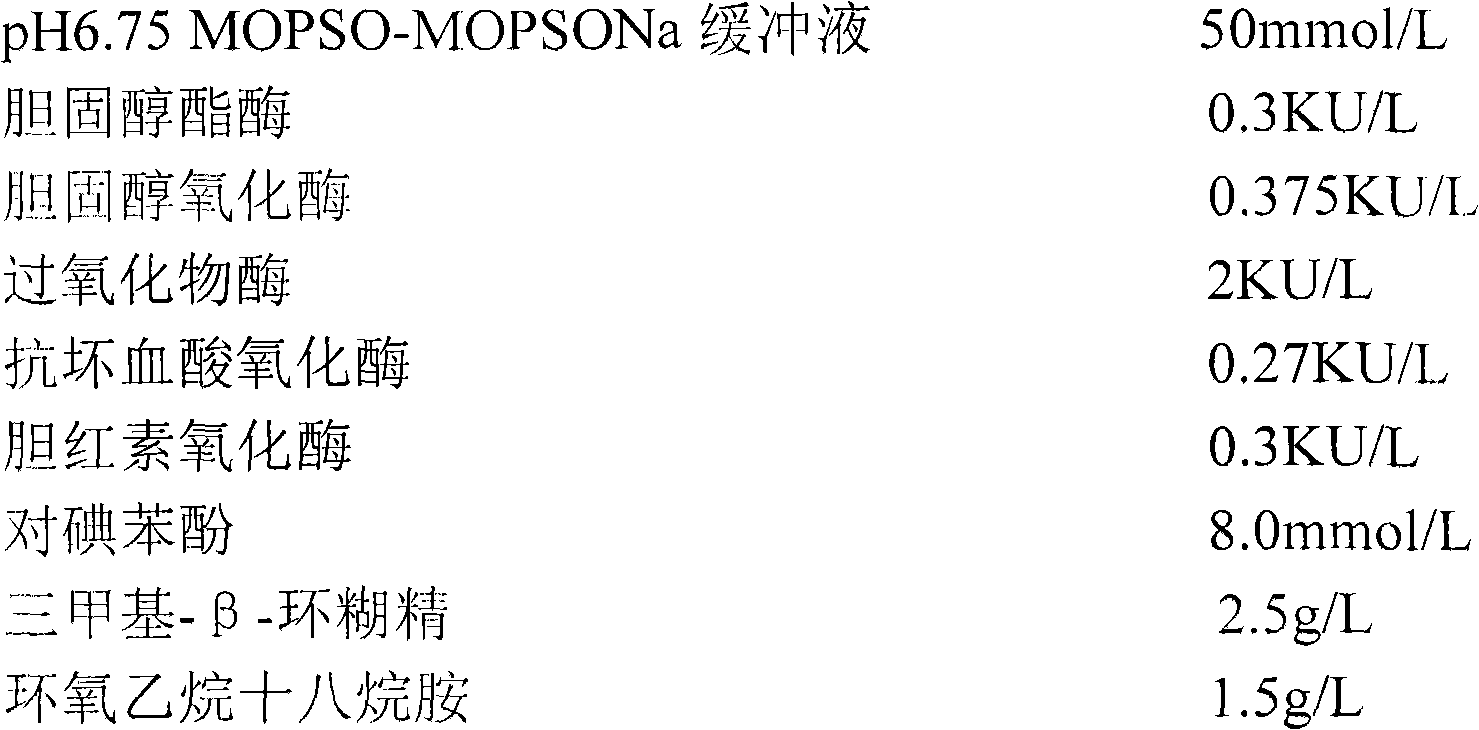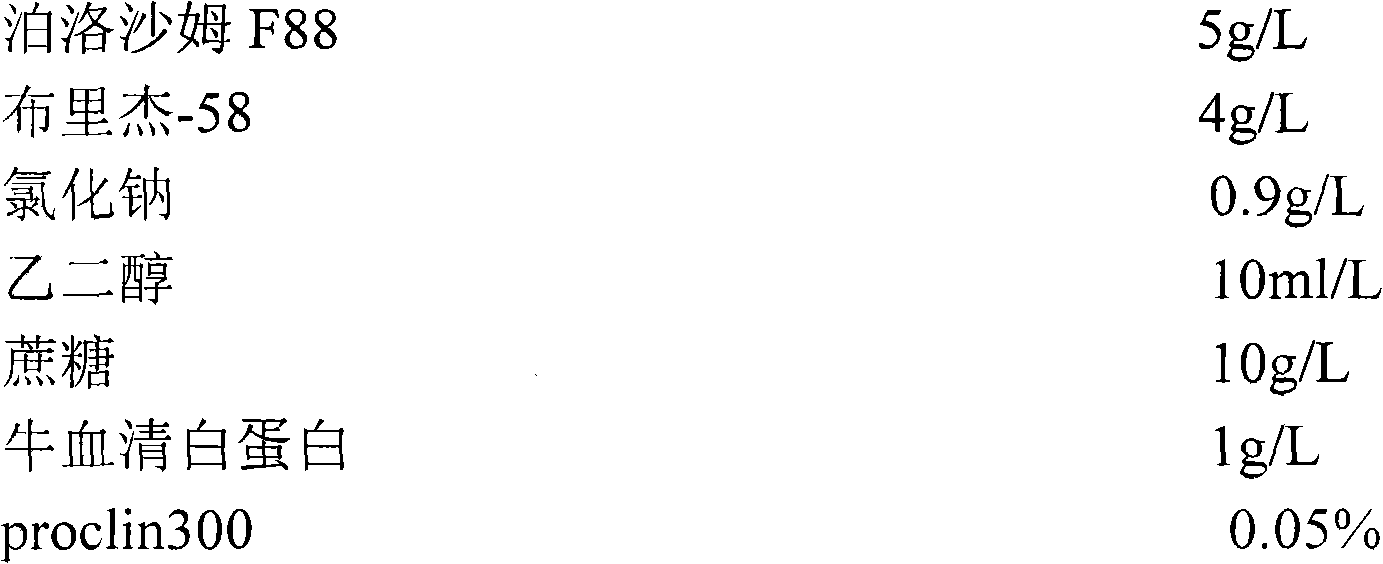In-vitro diagnostic reagent for homogeneous method of low-density lipoprotein cholesterol (LDL-C) of serum
A low-density lipoprotein and LDL-C technology, which is applied in the fields of medicine and biochemistry, can solve the problems such as the quantitative analysis of serum has not been applied, the amount of samples taken is large, and the interference cannot be completely eliminated.
- Summary
- Abstract
- Description
- Claims
- Application Information
AI Technical Summary
Problems solved by technology
Method used
Image
Examples
Embodiment
[0016] Embodiment: The assay method adopted is the end-point method of microwell plate chemiluminescence. The first step is to prepare the sample diluent: take 10 μl of the serum sample, dilute it to 1000 μl with normal saline, and mix it for later use; the second step is to operate according to Table 1.
[0017] Table 1
[0018]
[0019] 20 cases of serum LDL-C specimens were simultaneously measured by this method and the LDL-C precipitation method recommended by the National Clinical Laboratory Operation Regulations (Third Edition). Table 2 is a comparison table between the measured values of this embodiment and the measured values of LDL-C precipitation method reagents. The correlation coefficient r between this example and the LDL-C precipitation method is 0.9968, which shows an excellent correlation.
[0020] Table 2
[0021] Determination value of LDL-C precipitation method (mmol / L)
[0022] 1.12
PUM
 Login to View More
Login to View More Abstract
Description
Claims
Application Information
 Login to View More
Login to View More - R&D
- Intellectual Property
- Life Sciences
- Materials
- Tech Scout
- Unparalleled Data Quality
- Higher Quality Content
- 60% Fewer Hallucinations
Browse by: Latest US Patents, China's latest patents, Technical Efficacy Thesaurus, Application Domain, Technology Topic, Popular Technical Reports.
© 2025 PatSnap. All rights reserved.Legal|Privacy policy|Modern Slavery Act Transparency Statement|Sitemap|About US| Contact US: help@patsnap.com



